Part 11: 580-600 YE-The Guardian of Orion
The Guardian of Orion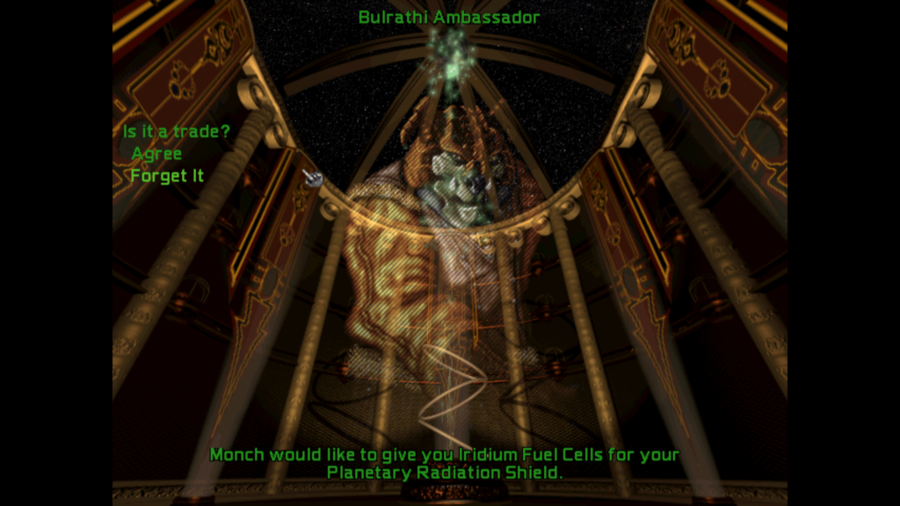
Late in 580, the Xenogovernmental Negotiations Consortium served as an intermediary for negotiations between Narestan energy industry companies and the United Empire of Bulra, helping arrange for the transfer of information needed for effective storage of antimatter as a power source. The energy density of antimatter meant that ships equipped with antimatter power storage had significantly greater endurance, while the antimatter needed was manufactured using the power output from industrial fusion. With existing ships upgraded, Narestan exploration ventures started anew, pressing further beyond the existing borders of Narestan civilisation.

By 586, this had led to the exploration of the Monstrum system, which was unremarkable, save for the dense ring of asteroids and debris surrounding the star. The system would be unsuitable for large-scale colonisation.
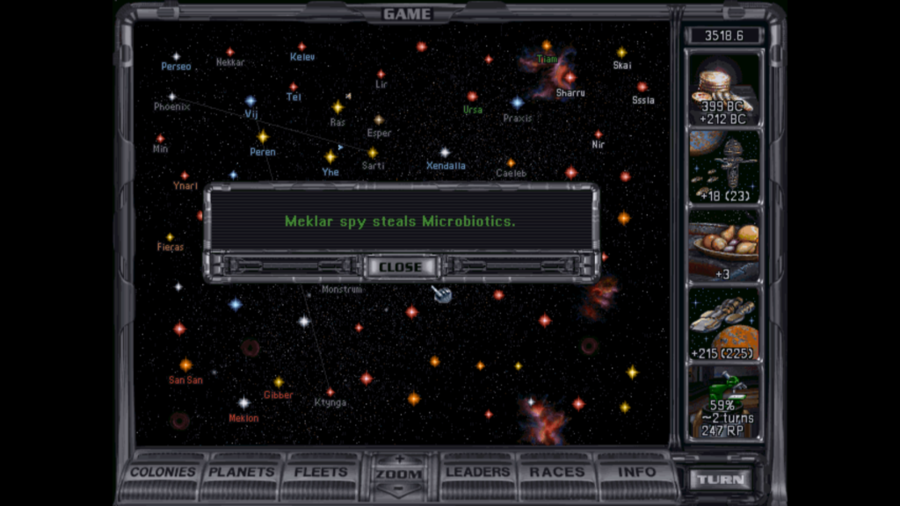
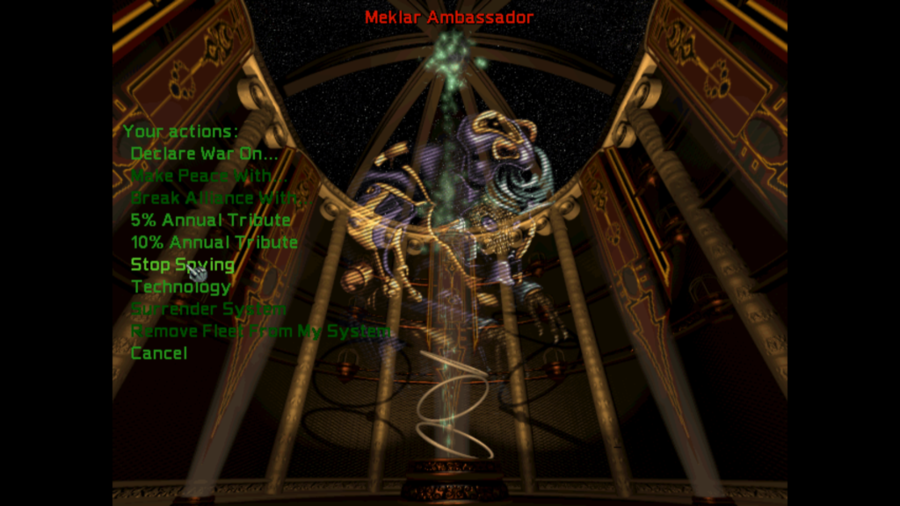
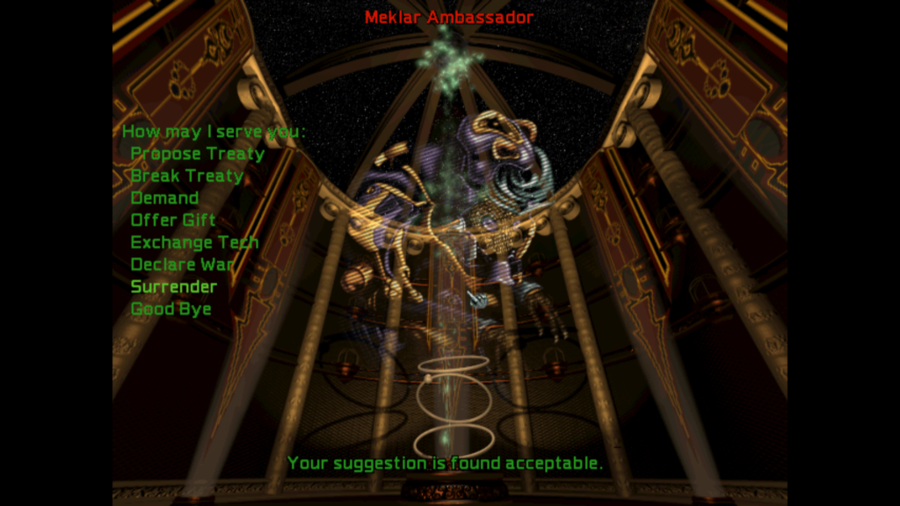
Meanwhile, espionage agents from the Autarchy penetrated the security of a number of Narestan biomedical firms, stealing information on modern genetically engineered medical microbes. The Consortium for Xenogovernmental Negotiations lodged a protest with the Autarchy, which gave assurances that such an incident would not happen again. This raised some suspicions of the Autarchy amongst many Narestans, but nonetheless there was little willingness to press the issue and endanger current good relations given the promises the Autarchy made. Ultimately, the issue was one resolved through negotiation.
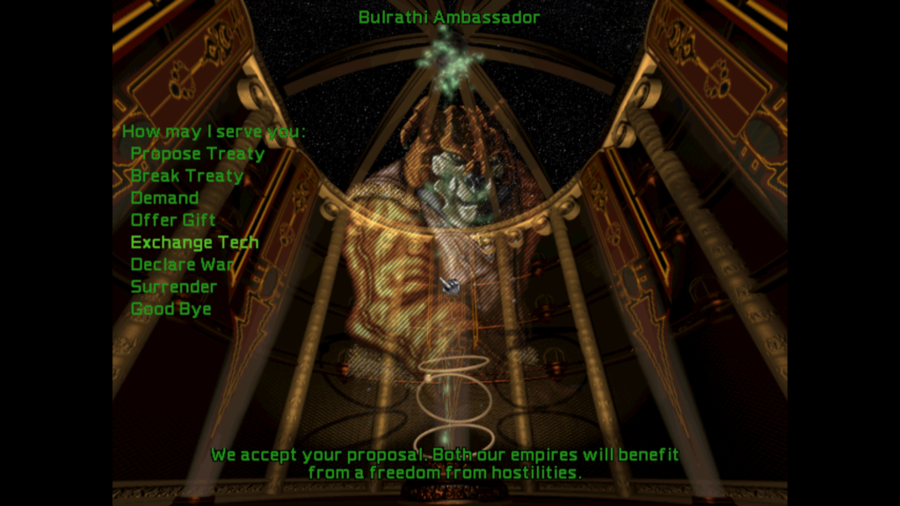
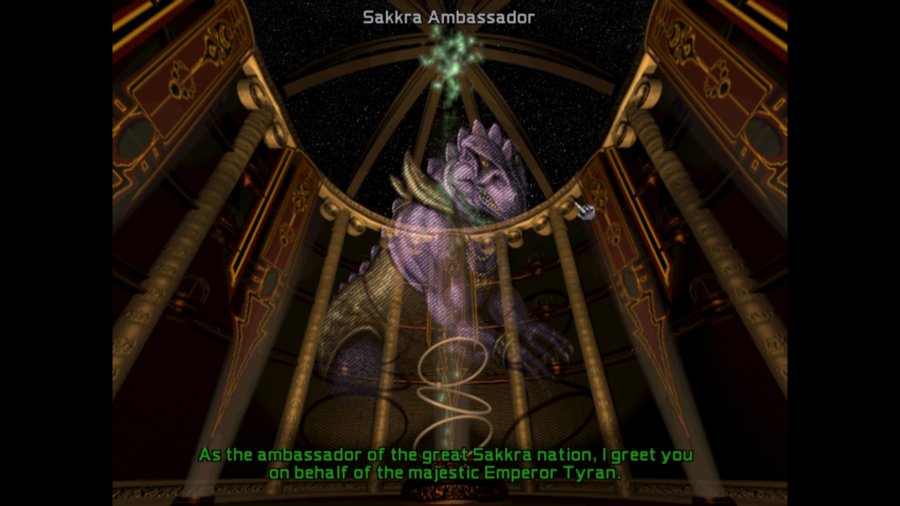
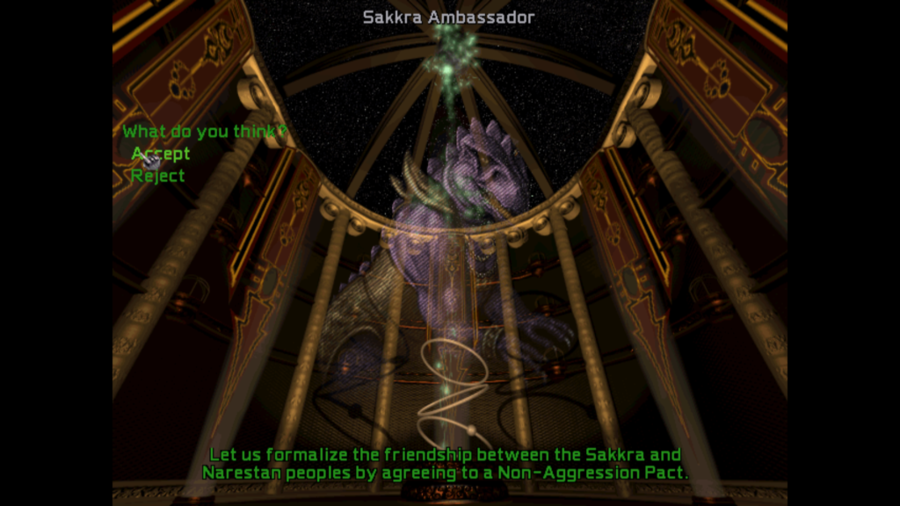
A year later, in 587, the Consortium for Xenogovernmental Negotiations sought and acquired formal recognition of Narestan territory and law from the United Empire of Bulra, while the Sakkra's Coalition of Nations released a statement in the same year formally recognising the legitimacy of Narestan claims to their territory. With these agreements, the threat of war between Narestan civilisation and any of its neighbors was put to rest, helping instill confidence that a peaceful, prosperous order would continue to hold sway over the region.
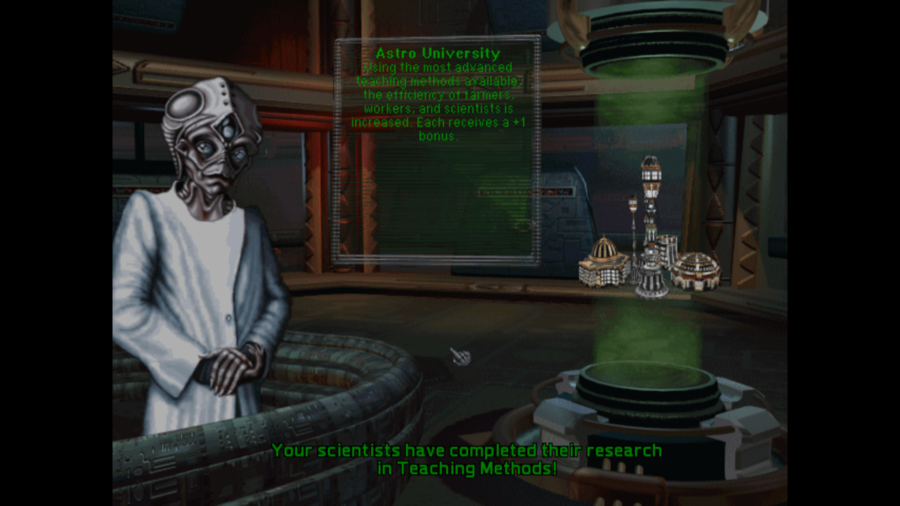
The year also saw the first steps towards large-scale implementation of process improvements in multiple sectors and industries, incrementally improving methods and equipment. These process improvements demanded a continually more skilled and specialised workforce, and demand for educational services steadily rose throughout Narestan civilisation.
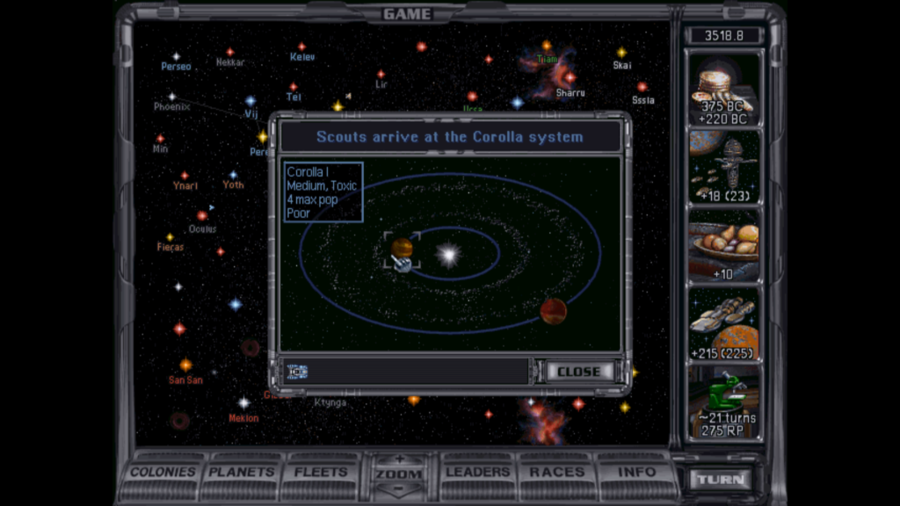

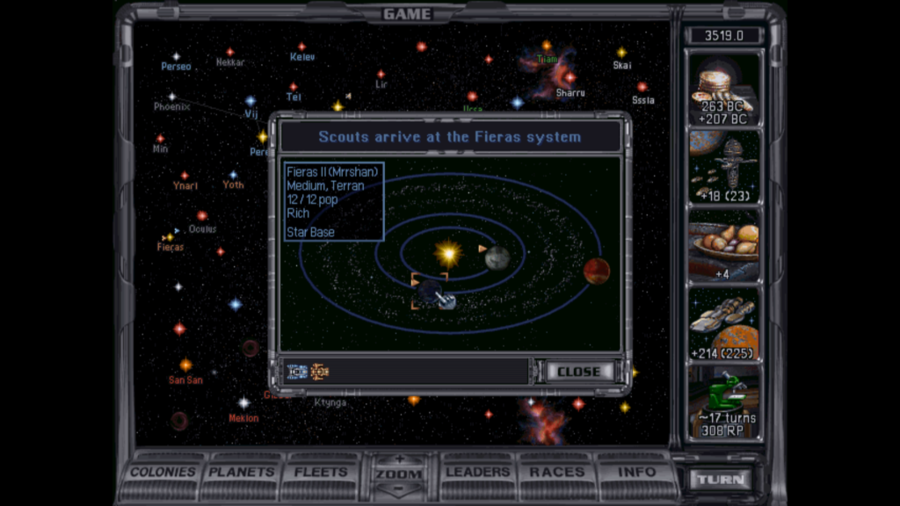

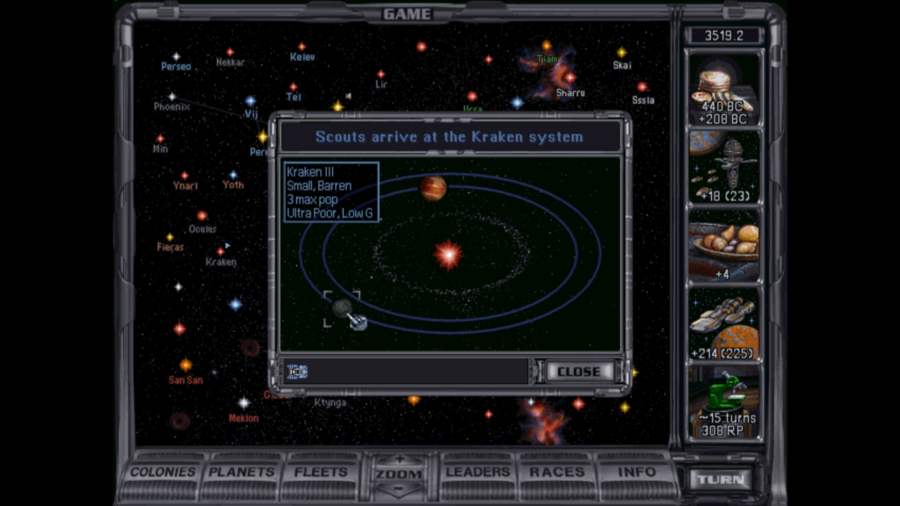
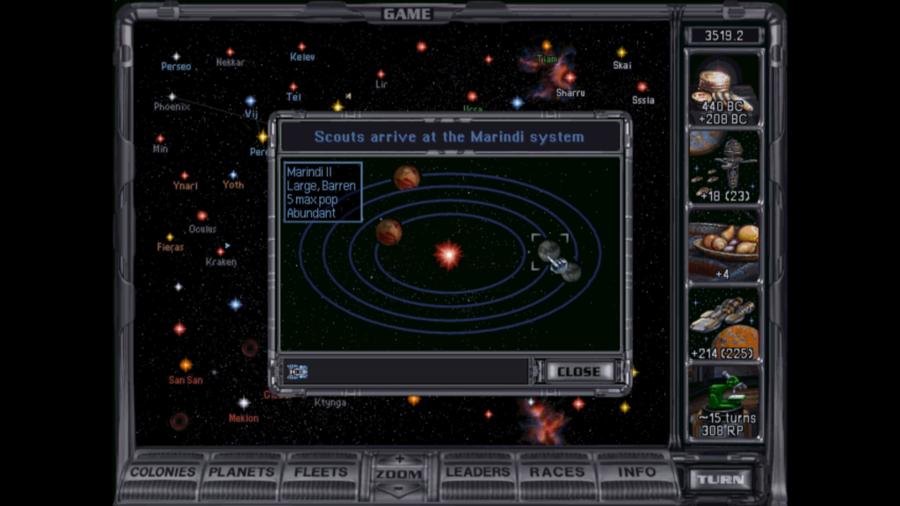

The years from 588 to 594 saw steady progress in the survey of new systems, with seven systems charted in as many years. Oculus, Marindi, and Lycaon seemed particularly promising for colonisation, while there was evidence of an existing technological civilisation on the surface of a planet in the Psi Gamma system, although any attempts to contact this settlement were curtailed by the presence of a massive elongated biometallic organism in orbit around the planet, granted formidable thrust by a series of plasma vents studded over its surface. Although this was an incredibly intriguing find, there is little that could done to exploit it as of yet.
Space Eels are unique amongst space monsters in that they don't immediately attack ships in the same system. They do, however, blockade planets, and prevent colonisation unless destroyed. They are extremely fast, have high evasion, and powerful defenses against missiles and fighters, although their durability and weapons are not terribly impressive for space monsters.



In 595, however, the Venturer was lost with all its crew after arriving at the Orion system. Its last dispatches indicated that it had detected a planet with evidence of extensive ruins from an earlier era, while a massive, highly advanced warship was bearing down on the Venturer, signalling in unknown data formats and languages. Before the Venturer could escape, it was destroyed, with little evidence for analysts at home to study regarding the nature of the weapons of the ship that destroyed it.
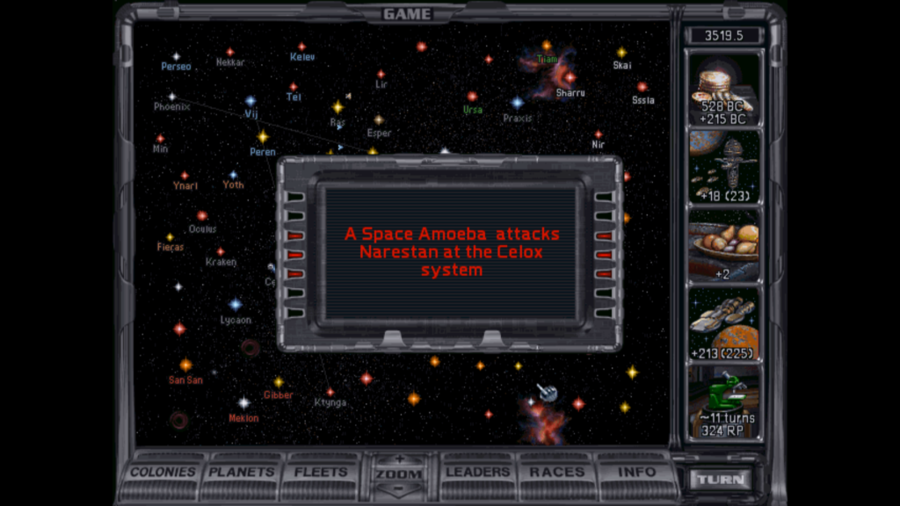
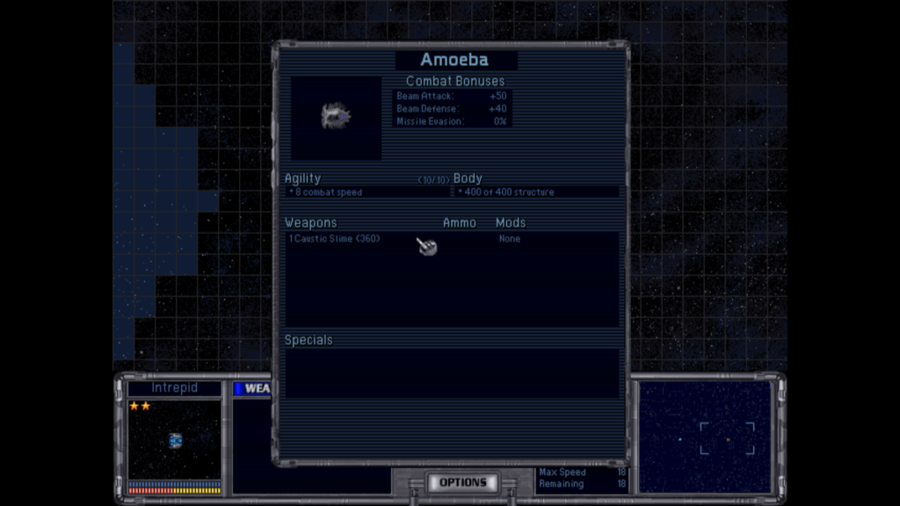
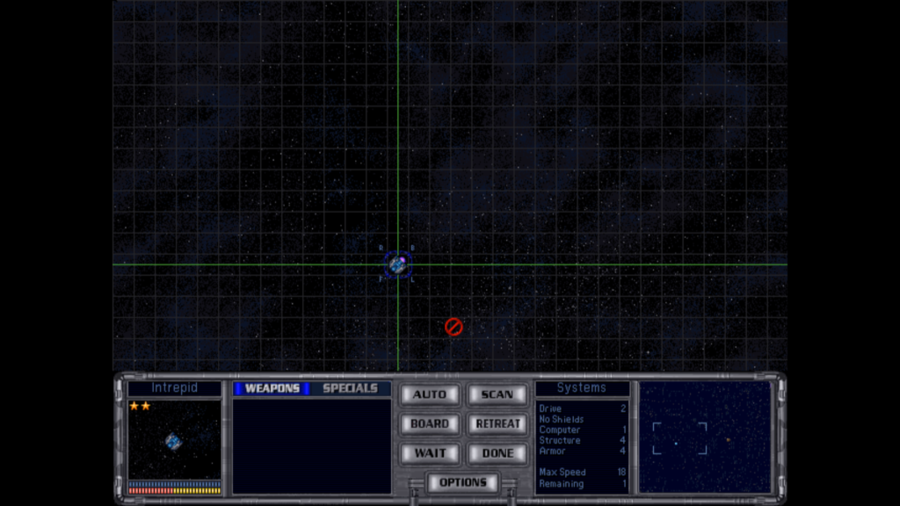
The following year, the Intrepid arrived at the Celox system, discovering evidence of a large, semi-fluid mass with slow chemical jets propelling it about the system. The Intrepid, not risking further contact with this bizarre deep-space organism, jumped back into FTL and returned to Narestan space.
Space Amoebas are slow and relatively short-ranged with their one attack, with no good defensive systems. They're probably the easiest space monster to deal with.
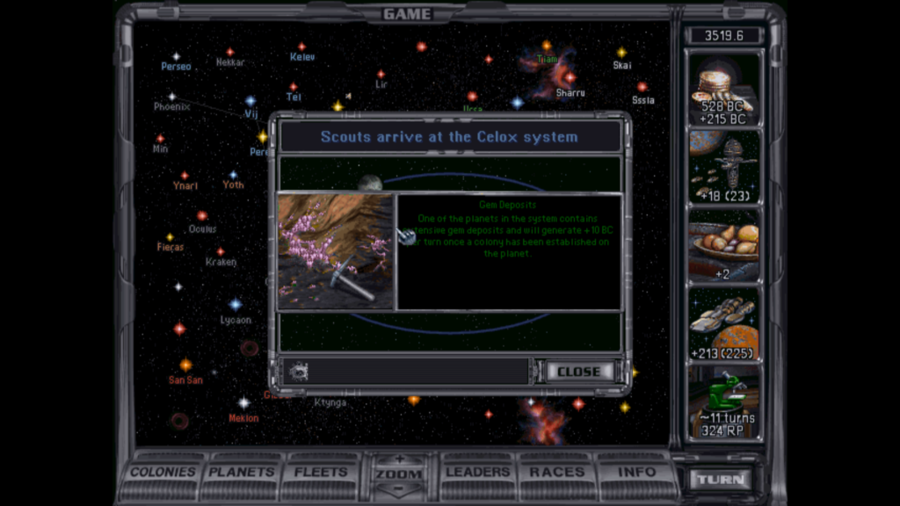

The system showed evidence of a number of lifeless worlds rich in metals and minerals, including one world with a highly corrosive atmosphere extremely rich in deposits of crystals with significant artistic value. The system could potentially be a valuable colonisation target, if it could be rendered safe for travel.
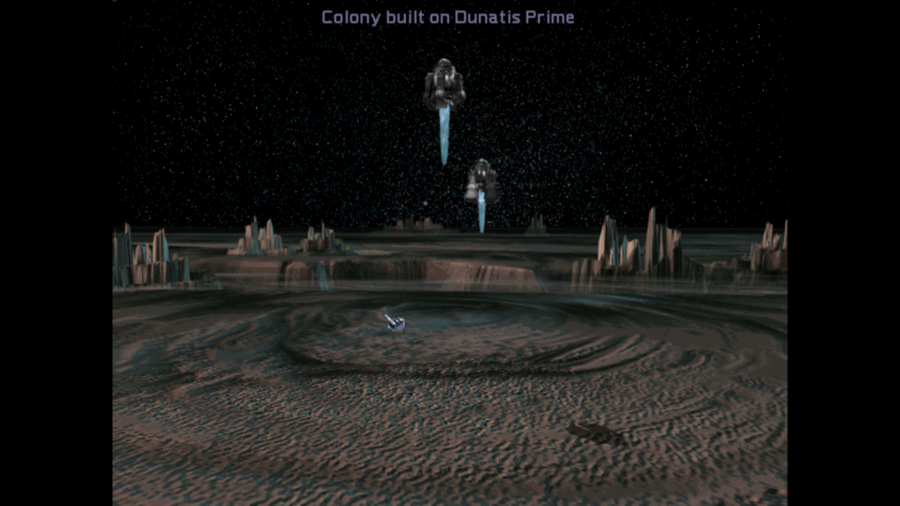
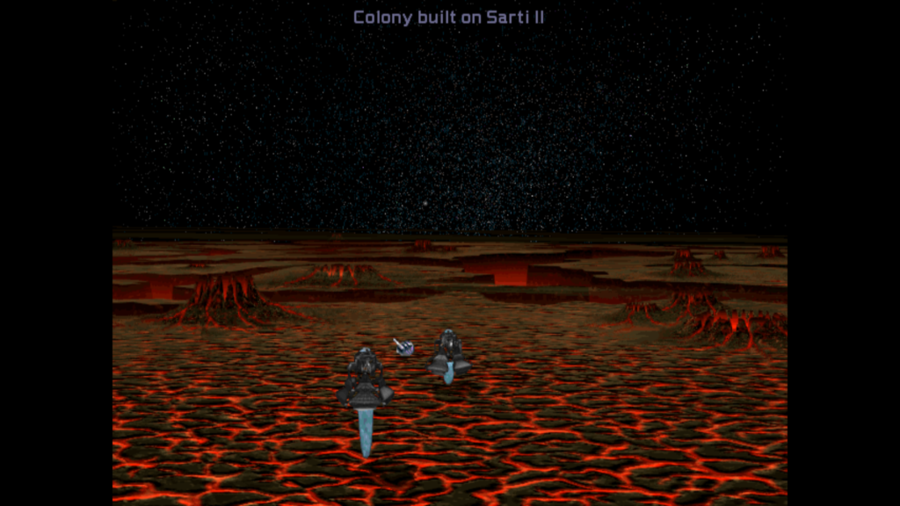
As the end of the sixth century YE approached, Narestan civilisation spread to two new worlds- Tesar, the second Narestan world in the Dunatis system, and Retel, a colony on a planet orbiting the outlying star of Sarti. Both worlds were small and lifeless, but nonetheless they both presented new frontiers for Narestan civilisation to exploit, and their settlers began their work with a will, and with heavy backing from investors in the more settled regions of Narestan space.
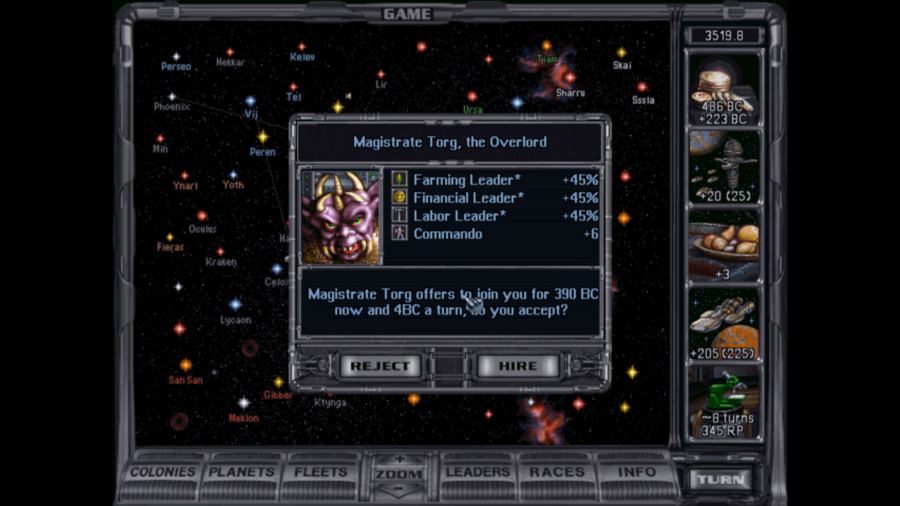
Meanwhile, continued competition in industries on Nares and Renar began to drive further improvements in productivity and efficiency on those planets. Productivity on Nares, already excellent, surged even further, while factories on Renar began to refit operations in anticipation of a future boom in shipbuilding.
The previous leader we had on the Tel system with Nares was also a Financial/Industry/Farming leader, with a 20% bonus for all three areas. We hire this leader, more than double the leader bonus to our home system, and shift our previous leader on our home system to our planned shipbuilding center.
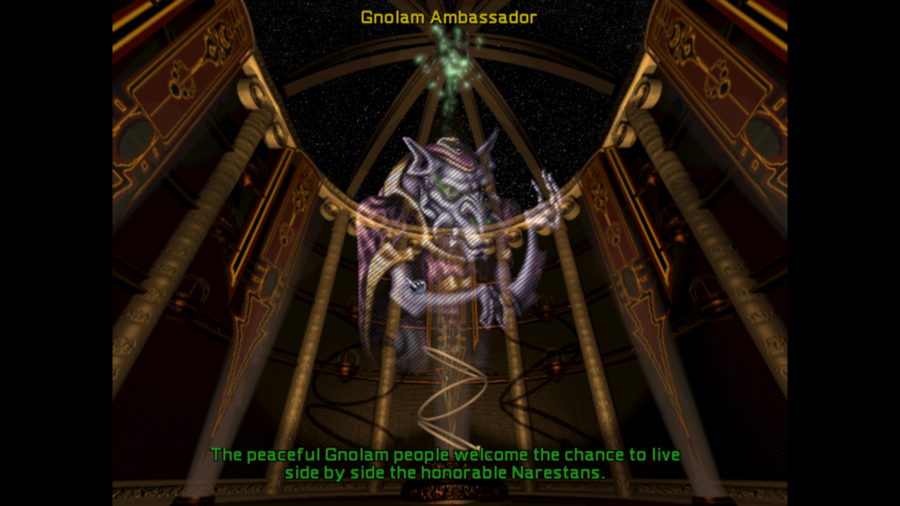
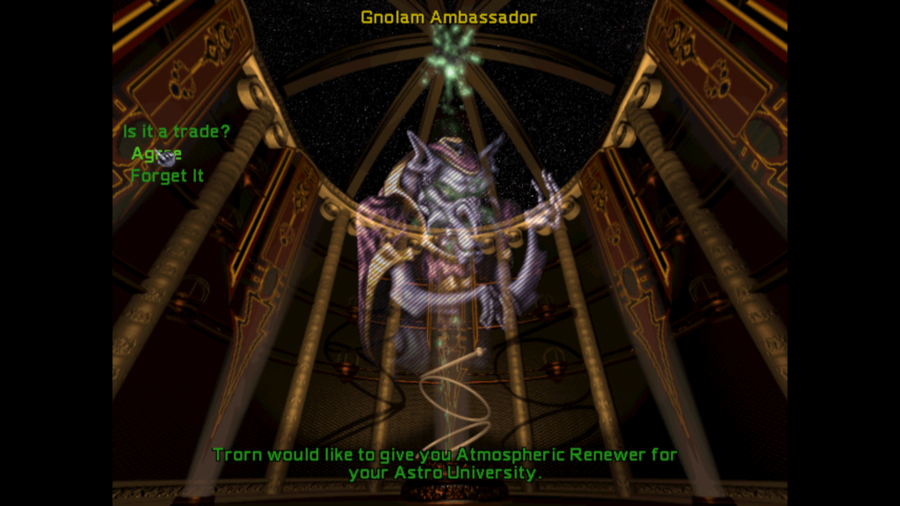
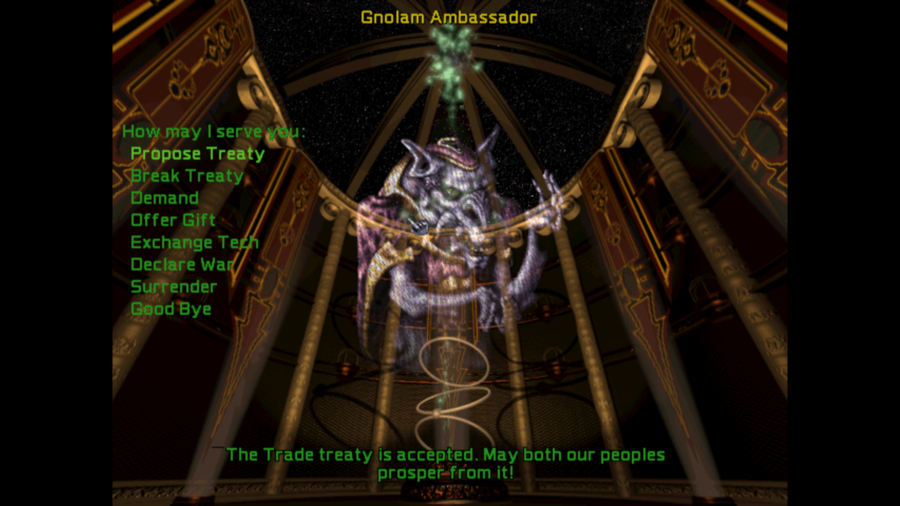
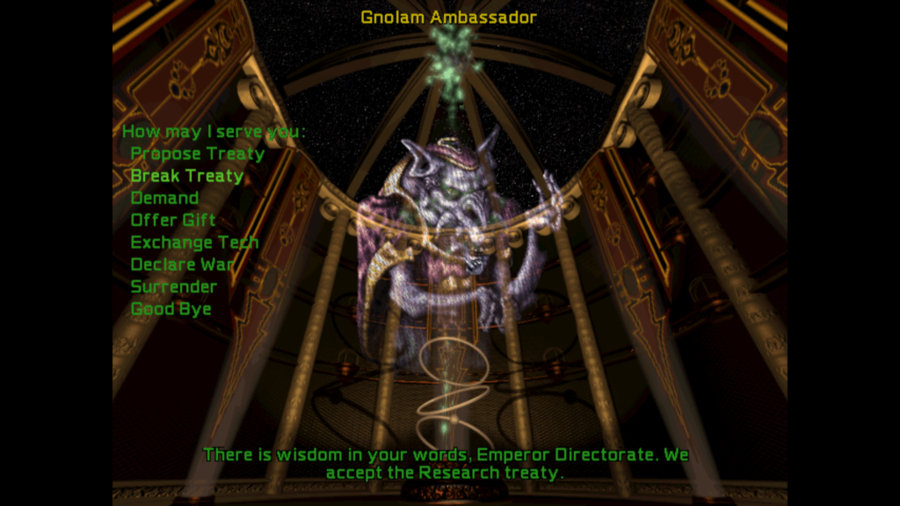
While Narestan civilisation extended to the Sarti system, Alkari colonisation reached the Marindi system. Shortly after the colonisation of the Marindi system, war broke out between the New Orion Empire leading the Alkari, and the Great Commonwealth of Gnol, a government uniting the Gnolam species beyond Alkari space, based on mutual accusations of espionage. The Great Commonwealth of Gnol landed invasion forces on the new Alkari colony planet of Preeweet in Marindi in 599, taking control of the planet and attempting to enforce order.
With Preeweet under the control of the Great Commonwealth of Gnol, it had the range to send communications probes to Narestan space, opening communications with the Consortium for Xenogovernmental Negotiations. The Great Commonwealth of Gnol was very eager to establish mutually-beneficial commercial relationships between the Gnolam and Narestan species, and early discussions quickly led to establishment of commercial and scientific ties, along with the exchange of technology.
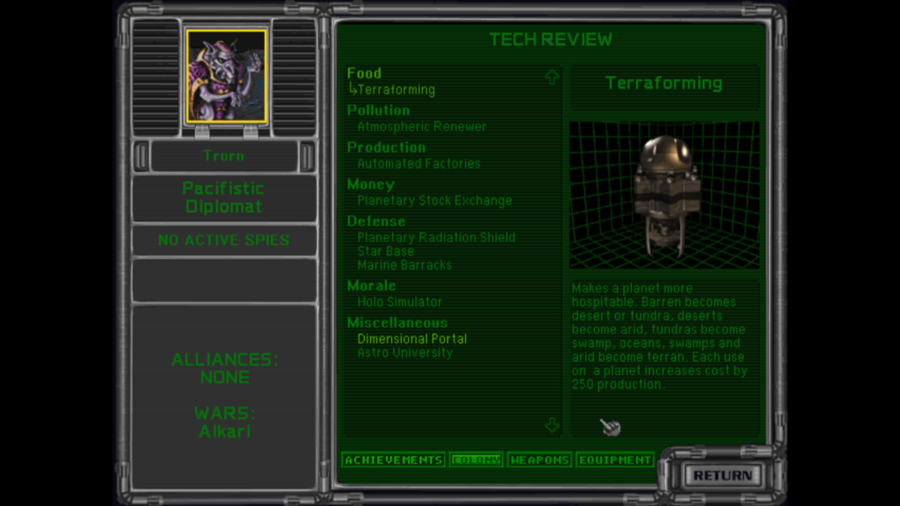
The Gnolams are a short, gracile, omnivorous mammaloid species native to the Nares-like planet Val in the Gnol system, adapted for a low-gravity environment. The Gnolams enjoy fairly keen senses and flexible minds, and a strong current of hedonism has arisen in their cultures, supporting broad traditions of art, culture, and commerce. The Great Commonwealth of Gnol is a nominal republic ruled by a Chancellor, elected for life by a limited electorate drawn from the heads of several wealthy and prominent families. The Chancellor's powers are very broad and there is notable scope for corruption in the Great Commonwealth by Narestan standards; nonetheless the personal and economic freedom for most Gnolams is greater than that enjoyed by almost any other alien species. The Gnolam economy is, perhaps, not as flexible, responsive, and innovative as the Narestan economy, but competition within its economy keeps it highly efficient. The less flexible structure in the Gnolam economy has come with more concentrated industrial sectors, which have developed an impressive capacity for standardised mass production of consumer goods.
Narestan Civilisation and Known Space as of 600

Significant process improvements and intensifying competition over the lucrative internal trade of Narestan civilisation have bolstered productivity on Nares even further, and the state of education on the planet is better than ever before. The agricultural sector here has shrunk significantly as agricultural production on Tenesal has risen, and Nares is no longer a net agricultural exporter.
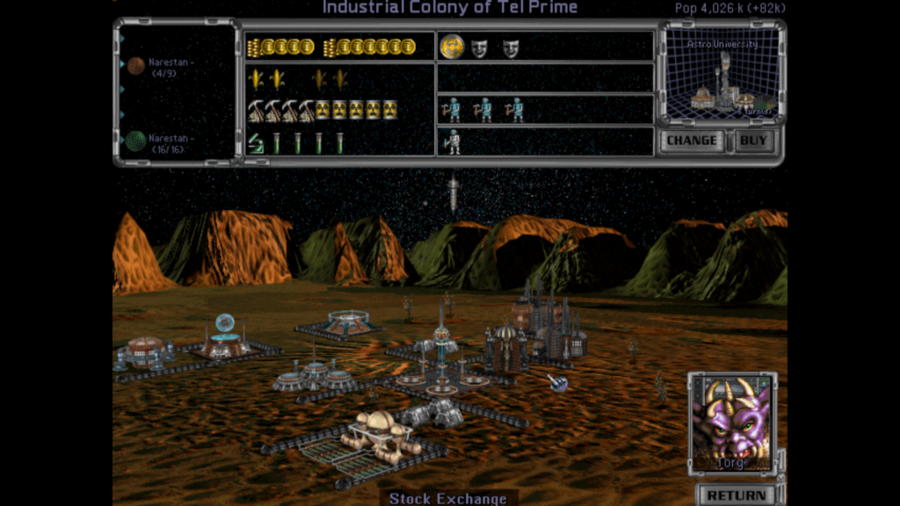
The past two decades have seen Sedal go from a nearly airless, lifeless rock to a planet with a complex and established biosystem requiring no special protection for inhabitants on its surface, if one still sparse on water. Some of the productivity improvements seen on Nares have begun to be seen here, although it remains somewhat behind, and the population has once again started to grow significantly.

The storms that once wracked Sadesal have dissipated as its atmosphere has grown thicker and it has had more surface water introduced, and its population now exceeds six billion. Compared to Nares, it remains fairly backward in industrial and scientific methods, but the planet nonetheless is one of the primary economic centers of Narestan civilisation outside Nares itself.
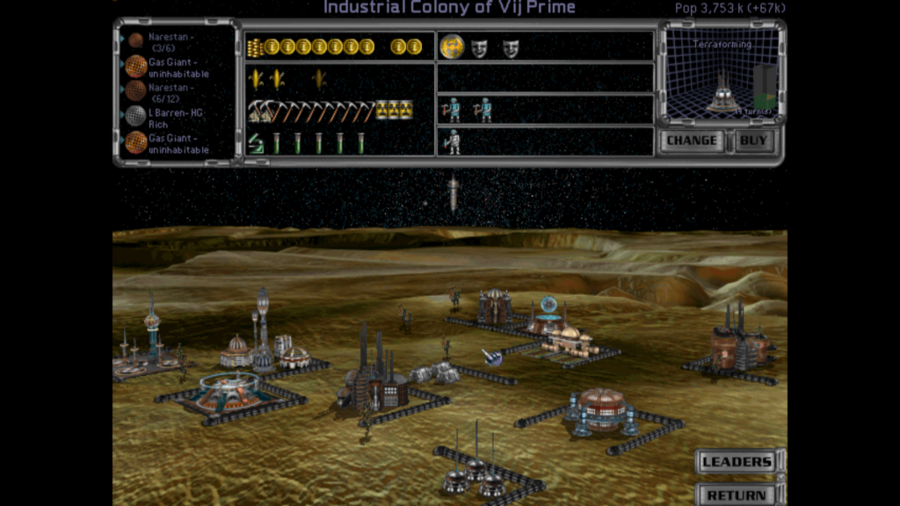
Tanan has seen similar progress in its terraforming to Sadesal, now having a reasonably pleasant environment over much of its surface. The efficiency of its workforce, which now uses thoroughly modernised equipment and methods, is actually higher than Sadesal's, which is helping to bolster further terraforming efforts here.

Talesen's terraforming process has helped introduce the first water and breathable air to its environment, although the planet remains harsh and wracked by duststorms as it adjusts to the new atmosphere. The atmosphere is steadily growing along with hydrographic coverage, and weather patterns are anticipated to moderate within the next few years.
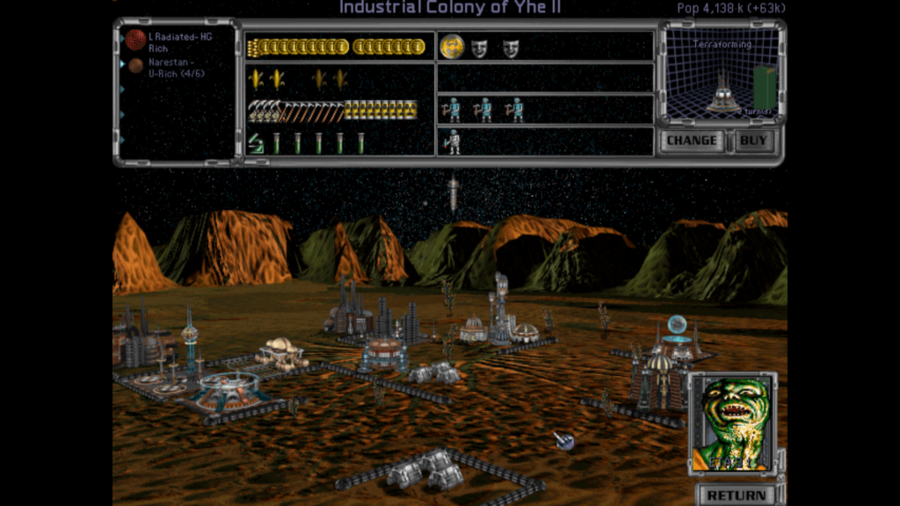
Renar's surface now hosts an arid life-supporting biosystem with reasonably moderate climate, which has enabled its population to grow to over four billion. Major process improvements have been made in local industry, already highly productive due to local resources, and several prominent commercial shipbuilding firms are in the process of relocating their headquarters here.
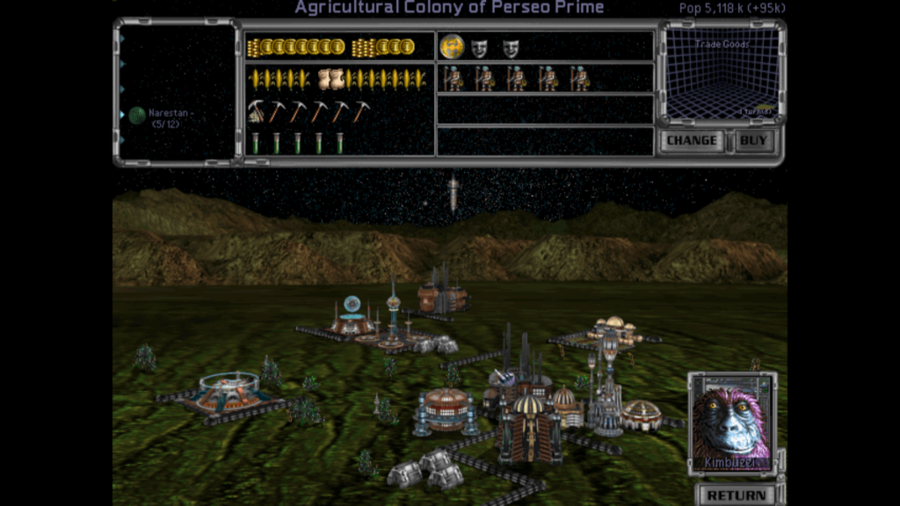
Tenesal's population exceeds five billion, approximately 250 million of which are employed in the single largest agricultural sector in Narestan space. Sophisticated methods and a large workforce ensure that over half of all the food consumed in Narestan space is produced on Tenesal, while the modest heavy industrial sector produces a steady stream of durable goods for export.
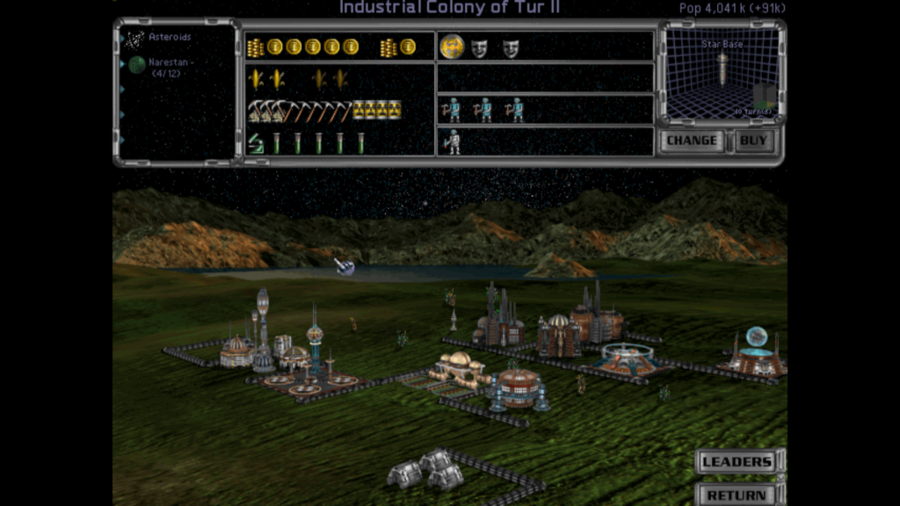
The population of Talabar has nearly doubled over the past two decades, now standing at just over four billion persons. Waste processing, process improvements, and improved education have bolstered the local economy, while the local environment has been adjusted to nearly Nares-like conditions. Trade volumes and innovation here have expanded dramatically, and an armed orbital shipyard is under construction here, by insistence of insurers.

Senet has significantly modernised industrial processes and education and introduced new entertainment products and luxuries even as its population has grown rapidly to just over 3 billion. The local environment has been adjusted to an arid sub-Nares environment, and the growth of its economy and population has rendered the planet significantly less dependent on outside investment.
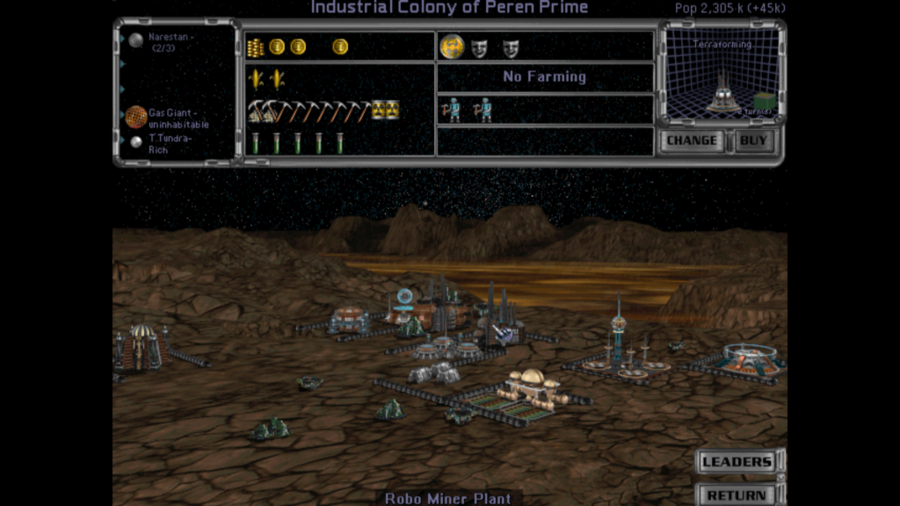
Heavier industry has been established on Sedelet, its business methods have been steadily improved, and protective screens against the harsh radiation of Peren have been erected on the planet. The world contributes modest amounts to interplanetary trade even as terraforming firms steadily begin the work to introduce an atmosphere and water to its surface.
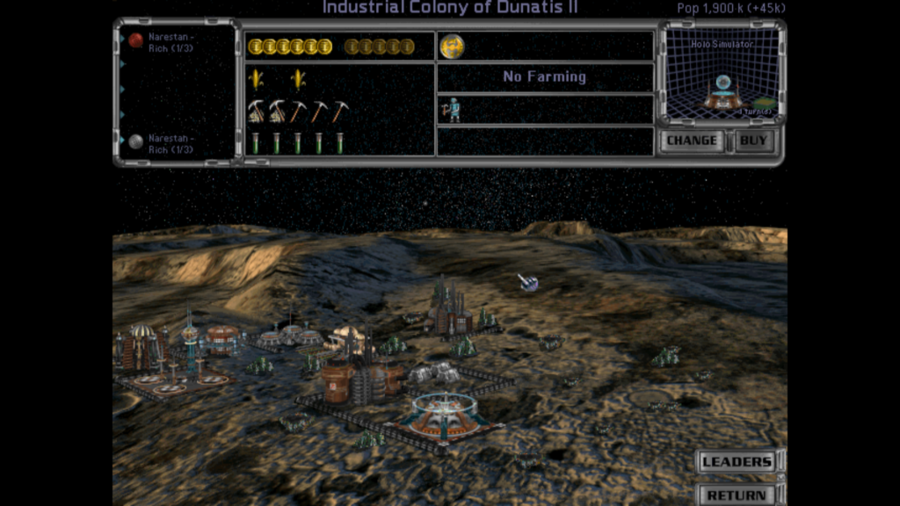
Talad has developed significantly over the past two decades, thanks largely to a steady stream of outside investment. The planet is protected from hazardous radiation, while improved luxury technologies for entertainment and recreation are being set up on the planet to help improve the lives of the people here.
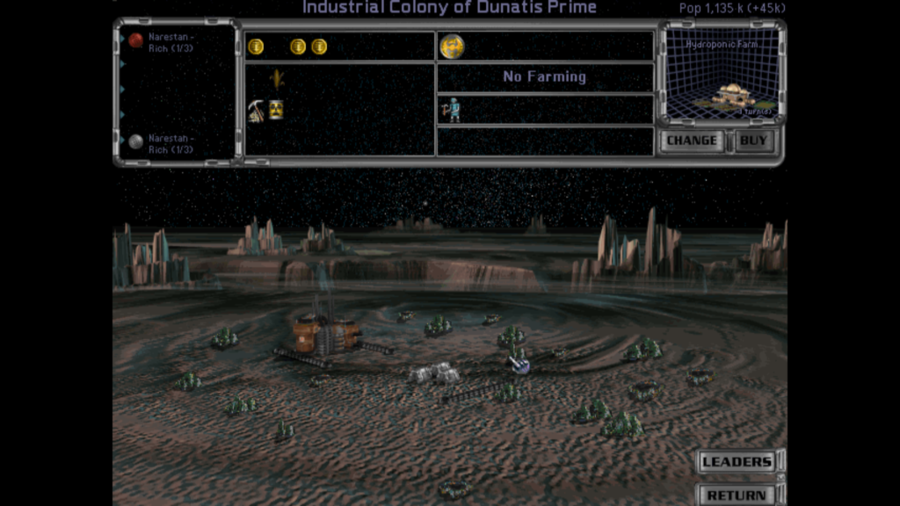
Tesar is a relatively new colony planet, with the basics of its industry in place and an effective local hydroponic agriculture sector being established. There is still a great deal of work to bring the planet up to modern standards, and the radiation from Dunatis remains a concern here.
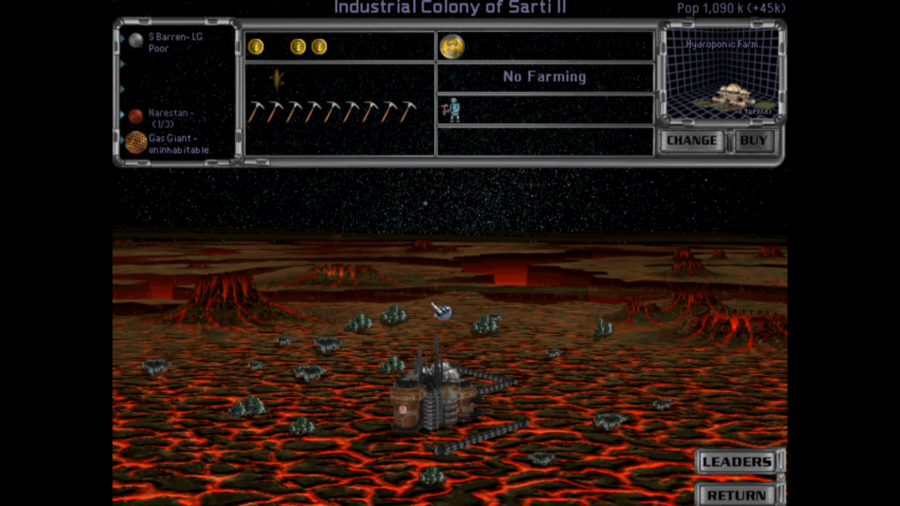
Retel stands in a similar position to Tesar, with the very basics of industry and agriculture established on its hostile surface and its inhabitants striving industriously to transform the planet into another prosperous world in Narestan civilisation.

There has been modest growth of trade volumes with the Autarchy, New Orion Empire, United Empire of Bulra, and Interstellar Union of Fieras over the past two decades, while the Coalition of Nations leading the Sakkra has blossomed into Narestan civilisation's largest trade partner by far. The Great Commonwealth of Gnol is expected to be a major trade partner itself, but for now trade routes are still being established and profits have yet to materialise. The outbreak of war between the New Orion Empire and Commonwealth of Gnol is a matter of some concern, as it has disrupted what has previously been a state of peaceful coexistence between Narestan civilisation's trade partners.

The Narestan economy has grown by leaps and bounds over the past two decades, both investment and innovation surging ahead. The total population of Narestan civilisation is over 55 billion, while the slow development of commerce and law over interstellar scales has begun to deliver freedom and justice more smoothly, reliably, and efficiently. Between Alkari, Bulrathi, and Narestan efforts, three more star systems have been colonised over the past decades, steadily helping civilise the region.
Going from +132 BC/year to +256 BC/year over two decades? Very nice.
Investment Proposals
Technology Acquisition
There are three different weapons technologies and one drive technology developed by alien species that could be acquired by Narestan firms, given sufficient inducement. The Sakkra have developed advanced designs for nuclear weapons with accelerated reaction in the warheads, study of which is anticipated to be useful in pushing forward overall understanding of chemistry and materials science by Narestan science. Mrrshan, Meklar, and Bulrathi governments and researchers have all indicated willingness to provide information on basic charged particle stream weapons that, although inferior to current Narestan weapons, are at least of some academic interest. Likewise, both the Gnolams and Meklars have the technology to harden hydrogen fusion bombs for orbital re-entry, likewise of some academic interest. Finally, Narestan process improvements and educational methods as applied to the economy are of interest to the Autarchy government, which has offered designs for the first drive systems to take proper advantage of the greater power output from antimatter energy storage.
Please vote on what technologies to trade for, and, if you have a preference, who to acquire them from. The Sakkra will trade Merculite Missiles for our Atmospheric Renewers, which will allow us to skip a tier of Chemistry research. We can acquire Fusion Beams in exchange for a more or less random 250 RP technology traded to any of the Mrrshan, Meklar, or Bulrathi- I've seen Tachyon Communications, Battle Pods, and Class I Shields all come up. We can acquire Fusion Bombs from the Gnolams or Meklars, likewise for a 250 RP technology. Finally, we can get Ion Drives from the Meklars in exchange for Astro University.
Research Priorities
Several fields of research offer promising advances for Narestan science. Further study into biological sciences may well boost both agricultural productivity and allow for improvements and alternations to the Narestan genome, curing diseases and boosting the overall capabilities of the species. Study into chemistry and materials science may have notable industrial applications, as would study into engineering and manufacturing techniques. Development of computing technologies could have a very wide range of benefits for Narestan civilisation, and lay the foundation for future breakthroughs that could significantly bolster the economy as a whole. Finally, continued study into physics should allow for more sensitive instruments and the techniques to compensate for gravitational forces on a very wide scale, helping open up more worlds to Narestan colonisation.
Please vote between biology, chemistry, manufacturing, computing, or physics research. If it looks like computing is winning, I'll run a secondary vote to determine some specifics.
Colonisation Priorities
Some reasonably promising planets for colonisation exist at the Oculus, Lycaon, and Ktynga systems, while there is some interest in establishing a permanent trading post in the Monstrum debris belt in order to ensure against loss of contact with the Great Commonwealth of Gnol in the event of the vagaries of war depriving them of the Marindi system. Which opportunities are pursued first remain up to colonists and investors.
Please vote between first colonising a large, barren, poor planet (5 billion max) at Oculus, a medium, radiated, rich planet (4 billion max) at Lycaon, a medium, radiated, poor planet (4 billion max) at Ktynga, or setting up an outpost at Monstrum. The outpost is quicker and cheaper to establish, but only provides us with some extended range and a guarantee we don't lose contact with the Gnolams.
Security Fleets
Multiple security firms have plans to acquire their own combat-ready vessels to help secure Narestan space, and the shipyards at Renar shall soon be busy with security contracts.
Feel free to propose a name for a security vessel, a size (chosen from destroyer or cruiser), and a role (as carrier or as line vessel). Please try to keep names reasonably serious. Each vessel shall represent a differing security outfit. If you are interested in getting into more detail about what ship systems to make use of, let me know when proposing a vessel, and I'll work with you on design. Within the limits of taste in names proposed, ship construction will be first come, first served.
The past decades have brought unprecedented prosperity to Narestan civilisation, but the specter of war threatens to bring chaos and destruction to space beyond Narestan borders. It is to be hoped that the current prosperity endures into the future.